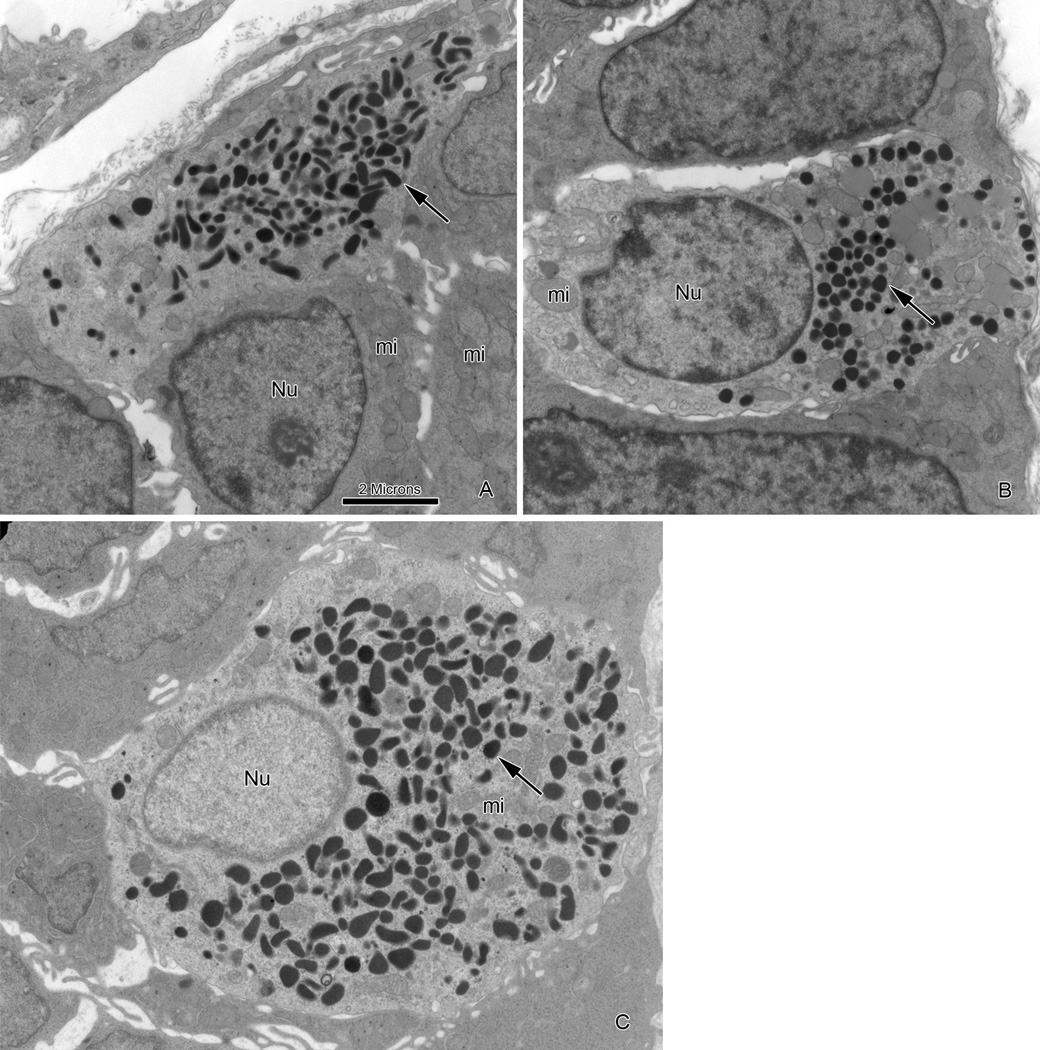Figure 4.
Immunohistochemistry for enteroendocrine cell (EE) markers in duodenal biopsies from patients with PC1/3 deficiency compared to age matched controls.
(A) Immunostaining for chromogranin A (CGA) in control showing immunoreactive EE cell (dark brown) scattered within epithelium of crypts and villi;(B) the same immunostain as in A in patient with PC 1/3 deficiency shows similar number and distribution of CGA immunoreactive cells (immunostaning for CGA ,magnification bar for A&B, 100 microns).
(C) Immunostaning for PC1 in control showing numerous PC1 immunoreactive cells (dark brown) distributed within crypt and villous epithelium; (D) in patient with PC1/3 deficiency only very occasional PC1 immunoreactive cells (arrow) are present. (Immunostaning for PC 1, magnification bar for C&D, 50 microns).
(E) Immunostaning for PC2 in control biopsy shows scattered positive cells (arrows) within villous epithelium. (F) only a single PC2 positive cell (arrow) is seen in duodenal mucosa of PC1/3 deficient patient. (Immunostaning for PC2, magnification bar same as in Fig C–D).
(G) Immunostaning for GLP1 in control with several immunoreactive cells within villous epithelium (arrows);(H) very occasional GLP1 immunoreactive cells (arrows) are noted in patient with PC1/3 deficiency. (Immunostaning for GLP 1, magnification bar same as Fig C–D).

